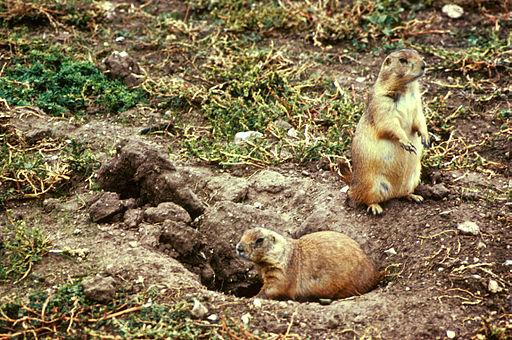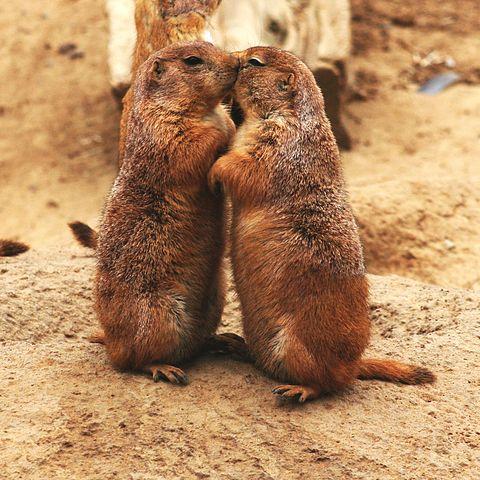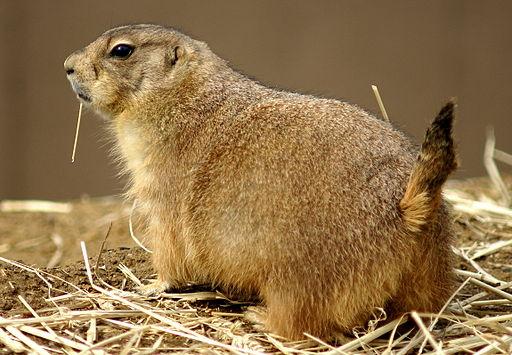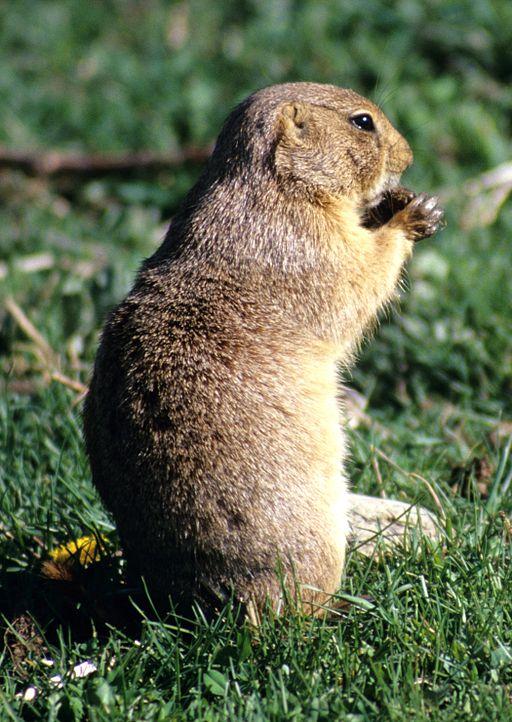Keystone Species - The Prairie Dog
Keystone Species - Vital To Ecosystems
The Prairie Dog
The prairie dog is regarded as a keystone species. Keystone species are those which are crucial to the ecosystem in which they live; those species which have an impact which far exceeds what would be expected of the organism based on its size and/or numbers.
Cassowaries and the mountain tapir are also keystone species. Both eat a vast amount of seeds of a great number of species. In the case of the cassowary, over 200 different species of vegetable material has been found in the contents of its stomach. In both creatures, some of these seeds pass straight through the digestive system to be deposited in a handy little pack of fertiliser some distance from its origins. Thus the tapir and cassowary act as seed dispersers for a number of different plants, some of which will not even germinate until they have passed through the 'host'.
The importance of the prairie dog as a keystone species is manifold. It is an important prey species (and in some cases the main food source) for such predators as the swift fox, black-footed ferret, American badger, ferruginous hawk and golden eagle. The mountain plover and burrowing owl depend on its burrows for nesting places. Grazing animals such as the plains bison, mule deer and pronghorn prefer grazing on prairie dog land.

Prairie dogs rid their 'towns' of high grass. When prairie dogs are exterminated from an area, there is an undesirable spread of brush-type vegetation. The tunnels and burrows are also important to the environment. Rainwater is channelled into the water-table thus reducing run-off and erosion. In heavily grazed areas, an additional bonus is the reversal of soil compaction brought about by grazing animals.
Prairie dogs are burrowing rodents found on the grasslands of North America. It gets its name from its habitat the prairies- and from the fact that its warning call is similar to the barking of a dog. Its genus name, Cynomys, is from the Greek meaning 'dog mouse'. Lewis called the animal the 'barking squirrel' in 1806. There are five species. The common names are black-tailed, white-tailed, Gunnison's, Utah and Mexican prairie dogs.
Range
Prairie dogs are found from the northern states of Mexico right through to Canada. Their range starts at the southern ends of the Great Plains in Mexico and mostly to the west of the Mississippi in the USA through to Canada.
During the 20th century, much of the Great Plains was taken for agriculture resulting in the extermination of around 98% of prairie dogs. Their range today is around 5% of the original.
Habitat
The prairie dog frequents altitudes from 2,000 to 10,000 feet. The temperatures of these areas range from 38oCelsius to -37oC in the winter. Burrows provide protection from all manner of natural hazards hailstorms, floods, prairie fires, drought and blizzards, not to mention giving protection from predators. Temperatures in the burrows and tunnels range from 5 to 10oC in winter and 15 to 25 in summer.

Prairie dogs are highly social and live in large collections. These are called colonies or 'towns'. Family groups will occupy the same territory. Extensive systems of underground burrows and chambers have defined areas for different purposes. Burrows are 5 to 10 metres long and 2 to 3 metres below the ground. There may be 1 to 6 entrances. Some of the entrances are surrounded by mounds of dirt while others are just holes in the ground. The mounds are formed into dome craters or rim craters. Rim craters can be as high as a metre and act as observation posts for the scouts. The chambers within the burrows have particular functions. Some are nursery chambers. These are usually deeper. Others are daytime chambers or sleeping chambers.
The different species have different patterns of building. The white-tailed prairie dog have more scattered burrows rather than the large towns of the black-tailed species. The largest recorded community covered some 65,000 square kilometres. A typical black-tailed town might be less than 1.5 square kms.
Description
The prairie dog has a stout little body of between 30 and 40 cm long (including the short tail of 8 to 10 cm) and weigh between 0.5 and 2 kgs.

They are brown in colour. Life span in the wild is 3 to 4 years.
Behaviour
Family members keep bonds by 'kissing' and grooming one another. A town may contain a number of family groups, which usually consist of an adult breeding male, 2-3 adult females and several offspring of each sex. Females remain in the one group throughout their lives and bring stability to the group. Young males are ousted and must find another group.
All species hibernate for at least some period in winter. On the mountain plains, there might be a six-month hibernation.
Territories are defended vigorously. Well established borders may coincide with physical elements such as trees and rocks. There may be 20 antagonistic encounters daily over border disputes. There will be much staring, flaring to tails, pretend charges and chattering of teeth. Females may even jump in to help a smaller male.
It is believed that prairie dogs have a wide range of communication calls other than those used simply as warnings of danger. Loud alarm calls are sounded by yipping like a dog. There is also an 'all clear' signal. To designate territory, the prairie dog 'jump-yips', stretching vertically and extending the front paws in the air while yipping. Such an action encourages a similar response from others nearby.

Nutrition
The prairie dog is basically herbivorous and eats all kinds of vegetation. It also eats some insects. Roots, seeds, buds, fruit and native grasses are all eaten.
Reproduction
Copulation takes place in the burrows. Females do most of the caring and collect grass for the nest while the male defends the territory and maintains the burrows. The gestation period is around 34 days with some variations between species. Three to six young are born and only one litter per year is raised.
The first six weeks of life are spent underground being fed by the mother. With the advent of weaning, the young begin to appear on the surface and by five months of age they are fully grown. Prairie dogs may engage in infanticide if a male takes over a new group. Lactating females may also kill another's pups.
Threats
Coyotes, badgers, foxes, black-footed ferrets, badgers, hawks and eagles all prey on the prairie dogs. Snakes also enter the burrows.
Conservation
The Utah and Mexican prairie dogs are listed as endangered. It has been difficult to persuade land-owners to cease destroying the animal by poisoning, digging up burrows, etc. The prairie dog is enjoying increasing popularity as a pet although their highly social nature makes them a rather time-consuming pet.
- The World’s Most Amazing Dogs
Dogs are simply amazing creatures. Their loyalty is superb. Scroll down to find out if your pet dog is one of the most amazing breed of dogs in the world. These dogs still manifest traits from their ancestor – the wolf. Maremma Sheepdog is a unique...
- One Of A Kind - The Walrus
Monotypic Species - Keystone Species - The Walrus Is BothThe walrus is a monotypic species as it is the only living species in the genus Odobenus. There are a number of animals that are the sole representatives of their particular genera. Some of these...
- Natures Spare Parts - All About The Platypus
When the platypus started being introduced to the world outside of its natural habitat, many people thought it was a joke. Who could blame them? The platypus truly looks like someone put a bunch of different parts on a beaver or water rat. The platypus...
- One Of A Kind - The African Painted Dog
The African Painted Dog - An Example of a Monotypic SpeciesWhere Do African Wild Dogs Live?African hunting dog factsThe African painted dog is the only living species of the genus Lycaon although there are five recognised subspecies. It is therefore a...
- Endangered Animals - The Pangolin
On Its Way Out - The PangolinThe pangolin is another of those relatively unknown animal species that is being wiped off the face of the earth by man's greed and his misguided notions of the healing powers of its body parts. Once widespread, this shy...
